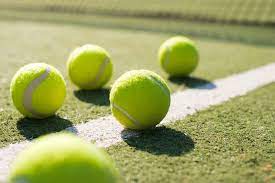
Tennis balls are one of the most iconic symbols of the sport, but how are they made? The process of crafting a tennis ball is intricate and involves many steps, from sourcing the materials to assembling the finished product.
Sourcing the materials
The first step in making a tennis ball is to source the materials. The outer felt is typically made from wool or a synthetic blend, while the inner core is made from rubber. The rubber is sourced from rubber trees, which are grown in tropical regions around the world.
Manufacturing the core
The rubber core is manufactured by mixing different types of rubber together and then vulcanizing the mixture. Vulcanization is a process that uses heat and pressure to harden the rubber. Once the rubber core is vulcanized, it is shaped into a sphere and then covered with a layer of felt.
Covering the ball with felt
The felt is applied to the ball using a process called hydro dipping. The ball is dipped into a vat of hot liquid felt, which then dries and hardens. The felt is applied in two layers, with the second layer being applied in the opposite direction of the first layer. This helps to create a strong and durable felt cover.
Finishing the ball
Once the felt cover has been applied, the ball is finished by sewing the two halves of the felt together. The ball is then inspected to ensure that it meets all of the required specifications.
Quality control
Tennis balls are subject to rigorous quality control standards. The balls are tested for their weight, bounce, and durability. The balls are also tested to ensure that they are the correct size and shape.
Shipping the balls
Once the balls have passed all of the quality control tests, they are packaged and shipped to retailers around the world.
The intricate process of crafting a tennis ball is a testament to the quality and craftsmanship of the product. Tennis balls are made with precision and care, and the result is a ball that is durable, responsive, and fun to play with.







